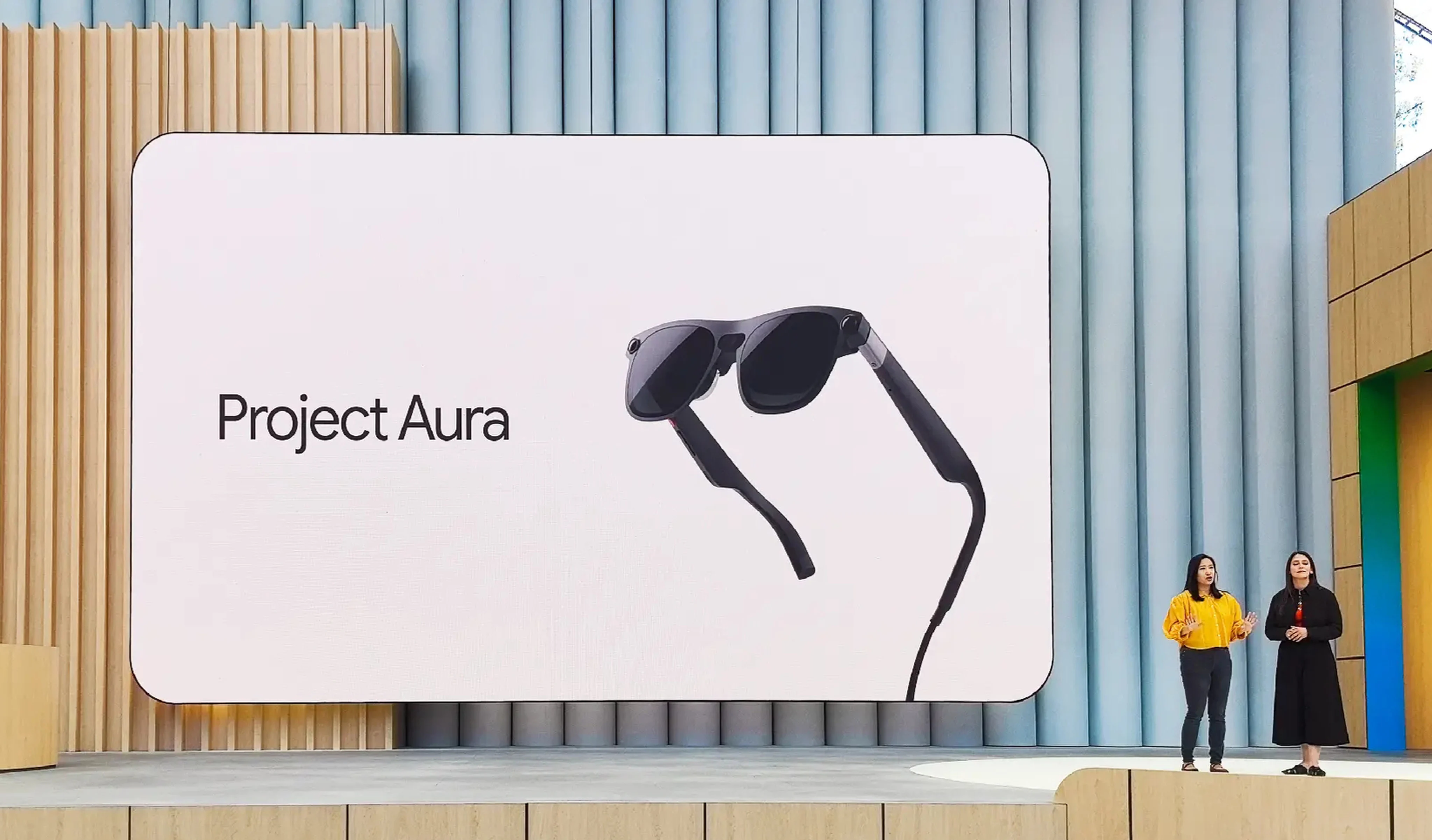By Wency Chen
Xreal, the Chinese augmented reality start-up behind Google’s first Android XR-powered augmented reality (AR) glasses, is gearing up for the mass-market release of its lightweight eyewear as early as the first quarter of 2026, its co-founder said.
Code-named Project Aura, the product was first announced at Google’s annual I/O developer conference in May. Rivalling offerings from Apple and Meta Platforms, Google adopted a strategy from its smartphone playbook: providing the operating system – Android XR – while collaborating with hardware makers.
Project Aura is Google’s second XR initiative, following Moohan, a collaboration with Samsung Electronics on a virtual reality headset similar to Apple’s Vision Pro.
Aura’s field of view (FoV) – the visible area seen through the glasses – exceeds 70 degrees, “the largest screen we have ever made”, according to a statement from Xreal at the Augmented World Expo in June. The device will be powered by a Qualcomm Snapdragon chipset alongside Xreal’s own XR-optimised X1S chip.
“This achievement is thanks to Xreal’s extensive experience in optical engineering, enabling thinner lenses with broader fields of view,” Wu Kejian, the company’s co-founder, chief scientist and head of algorithms, said in an interview with the South China Morning Post.
Wu said the company had invested heavily to develop the X1 spatial computing chip, which was launched in late 2024 to power the Xreal One model. The upcoming X1S chip would be an upgrade, offering enhanced memory and optimised cooling and power efficiency tailored for Project Aura’s data processing needs.
Apple’s Vision Pro also adopted a dual-chip design, combining its M2 chip used in Macs and iPads and a customised R1 microprocessor for mixed-reality experiences.
Wu likened Project Aura’s partnership with Google to the collaboration between Taiwan’s HTC and Android about two decades ago, which spurred the popularity of smartphones.
While Wu did not specify sales targets, he indicated that Aura’s pricing would be higher than current AR glasses, but lower than VR headsets currently on the market. Xreal’s most powerful AR model, the One Pro, retails for US$599, significantly below Apple’s US$3,499 Vision Pro.
Talks with Google began in early 2024, which led to a prototype that gained approval from the US firm’s management, Wu said.
He sees clear advantages in Android XR, especially its seamless integration with Google’s first-party apps like Search, Maps and YouTube, as well as compatibility with other XR applications. Moreover, Android XR leverages Gemini’s multimodal AI capabilities, enabling advanced gesture and eye-tracking interactions and AI-assisted functionality.
Founded in 2017 under the name Nreal by Zhejiang University alumni Xu Chi, Wu Kejian, and Xiao Bing, Xreal has shipped over 600,000 devices globally and aims to exceed 1 million annual shipments within the next two to three years. Currently near breakeven, the company is also actively exploring an initial public offering, Wu said.
Despite cycles of hype and setbacks in the XR industry – from early VR excitement to buzz over the metaverse and most recently Apple’s Vision Pro launch – mixed reality technology has yet to achieve mainstream adoption due to high costs, hardware limitations and application scarcity.
“Integrating AI technology will define XR devices’ future,” Wu said, “Hardware breakthroughs are slow, but AI technology advances rapidly.”
The rise of AI-powered eyewear is evident in Meta’s Ray-Ban glasses, which have sold more than 2 million pairs since October 2023, despite lacking displays.
Following suit, other global players including Chinese firms Huawei Technologies, Xiaomi, Baidu, Rokid, Rayneo and Meizu, are racing to tap into the promising market segment. Xiaomi recently released AI glasses priced at 1,999 yuan (US$279), while Hangzhou-based Rokid began shipments in late June, promoting mobile payment integration.
IDC data showed that global smart eyewear shipments reached 1.487 million units in the first quarter of 2025, an 82.3 per cent year-on-year increase. In China, first-quarter shipments surged by 116.1 per cent to 494,000 units, with annual shipments expected to hit 2.907 million units, up 121.1 per cent.
Earlier this year, fellow Xreal founder Xu defined AI glasses as being from Level 1 to Level 5, and said this year marked the advent of low-tier Level 2 versions that were capable of photos and video, AI-driven conversations and simultaneous translation.
“The real tipping point for AI eyewear will come in 2027,” Xu wrote in a WeChat post, pointing out that more powerful AR displays and multi modal AI capabilities were coming.
Wu emphasised Xreal’s focus on domestic supply-chain localisation amid geopolitical tensions, and its strategy of global diversification in markets such as the US, China, Japan and Europe. He even speculated whether major Chinese tech giants might soon innovate operating systems akin to Android XR.
“Innovation is the ultimate resilience against market cycles,” he said.
